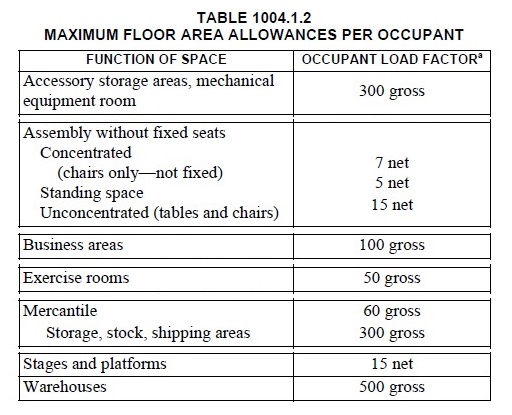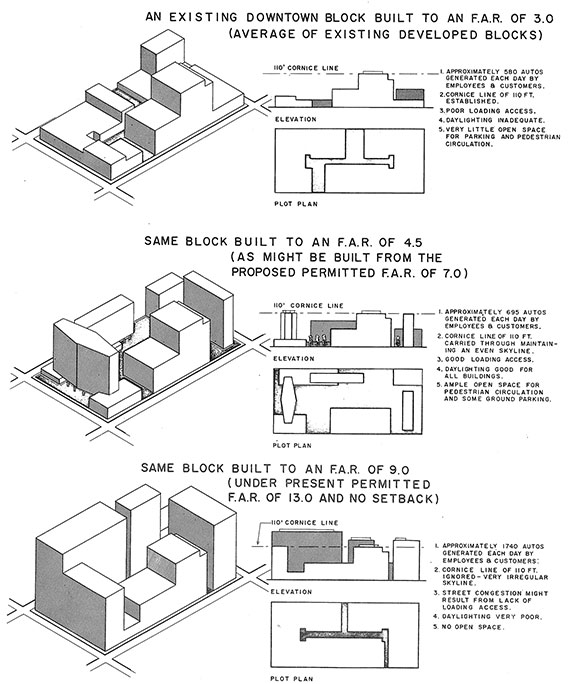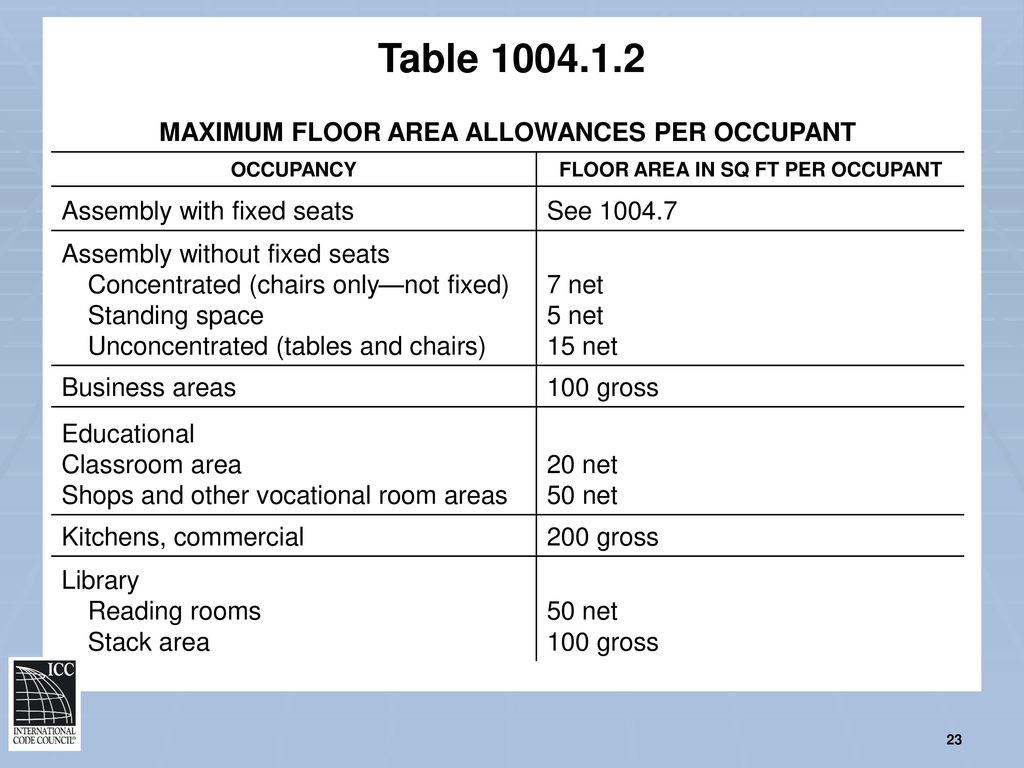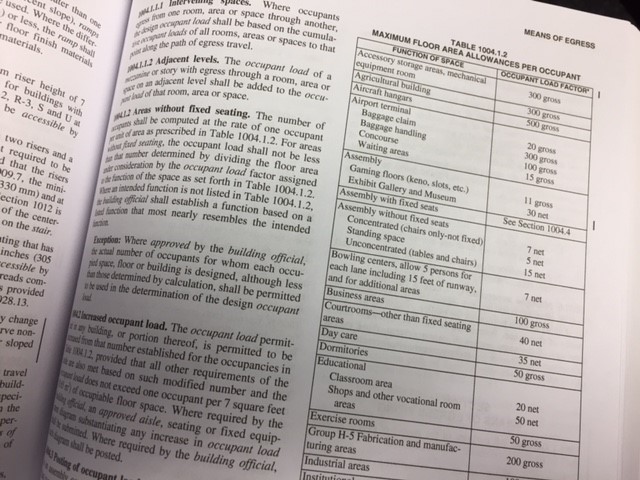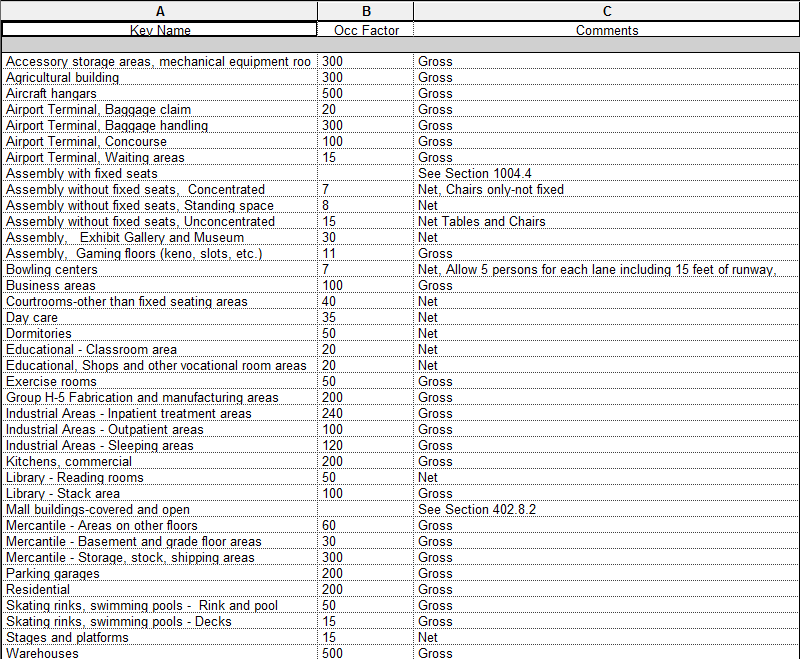Floor Area Per Occupant Net Vs Gross
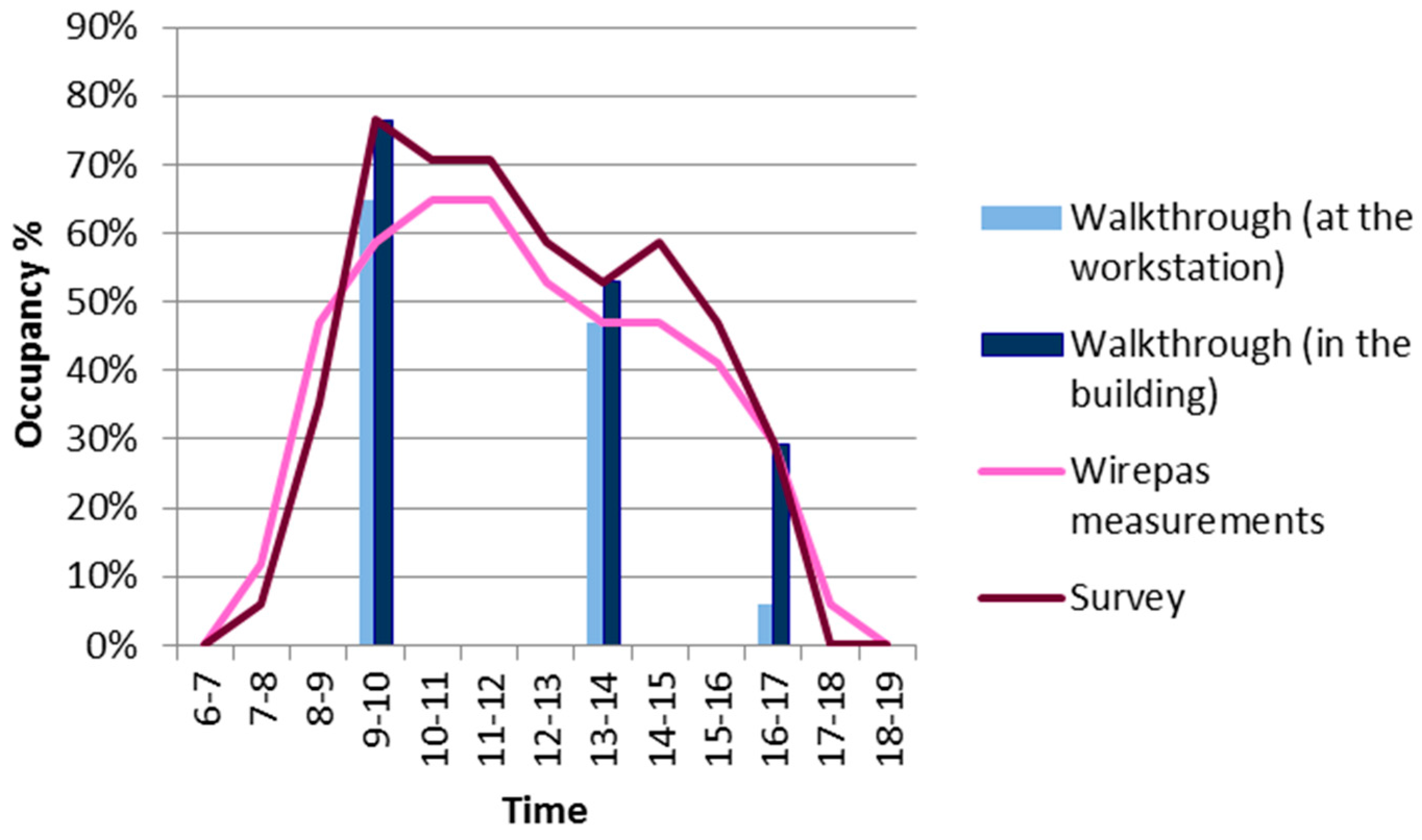
Factors are based on either gross or net floor area.
Floor area per occupant net vs gross. Occupant load is the calculated number of people or the actual number whichever is greater. The floor area of a building or portion thereof not provided with surrounding exterior walls shall be the usable area under the horizontal projection of the roof or floor above. Table 1004 1 2 maximum floor area allowances per occupant. The floor area within the inside perimeter of the exterior walls of the building under consideration exclusive of vent shafts.
Per occupant agricultural building. You will notice that some of the factors are calculated using net and others gross. Table 1004 1 2 displays the occupant load factor based on the function or use of a space or room. A gross factor is applied to the entire floor area including the area occupied by interior walls corridors columns fixed furnishings shafts and the like.
What is the difference between a net and a gross occupant load factor. The actual occupied area not including unoccupied accessory areas. Floor gross square feet fgsf and building gross square feet bgsf represent the overall footprint of a floor or building respectively and include shared public corridors and atriums elevators stairs the space occupied by the building s exterior wall and major mechanical spaces which generally account for an additional 20 to 30. For classrooms both the ibc and nfpa 101 list an occupant load factor of 20 net square feet per person.
The gross floor area shall not include shafts with no openings or interior courts. Commercial office floor area calculation methods. The occupant load factor is the maximum floor area allowed per occupant as displayed in table 1004 1 2. For classrooms both the ibc and nfpa 101 list an occupant load factor of 20 net square feet per person.
Floor area in sq.
